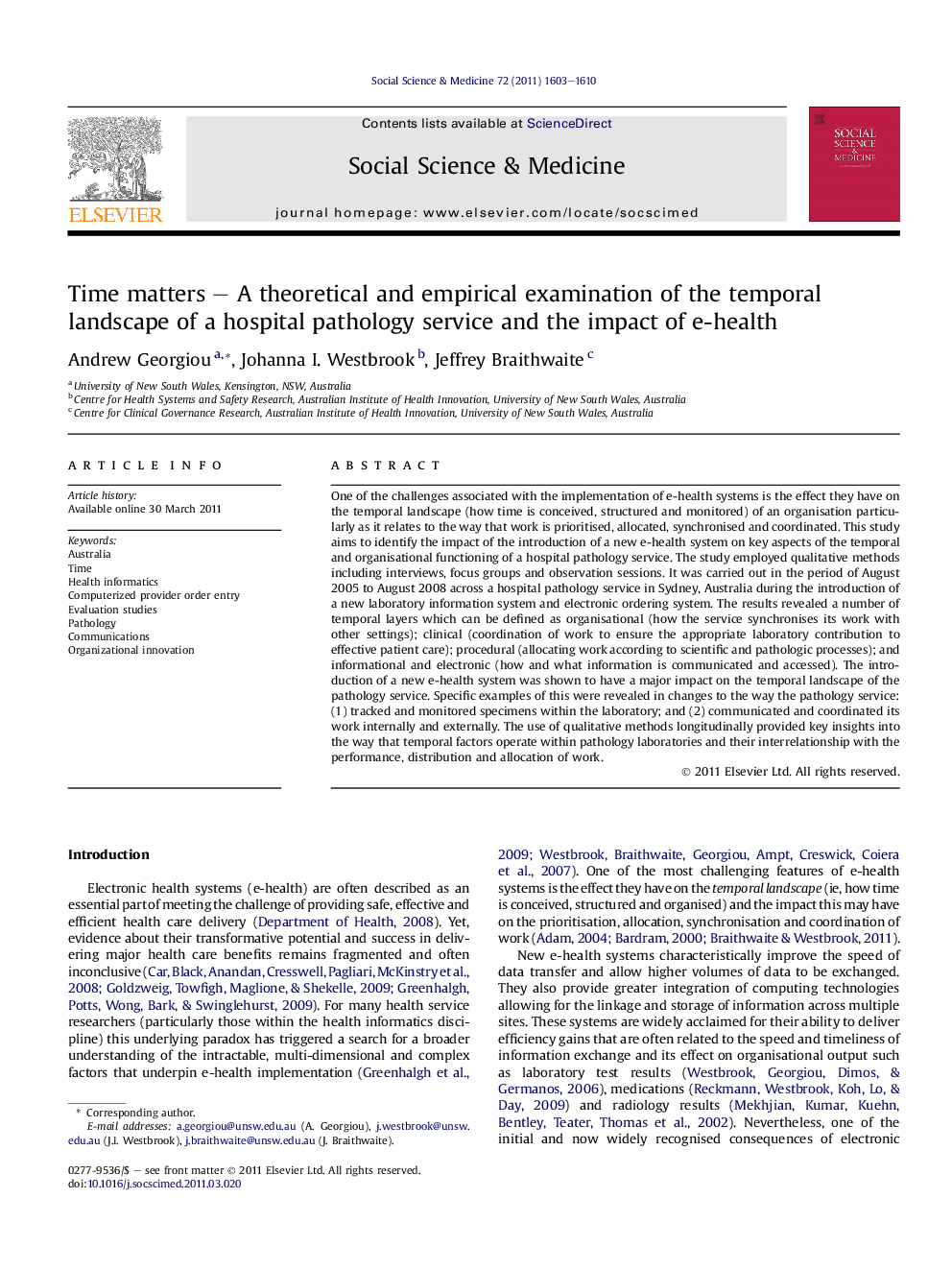| کد مقاله | کد نشریه | سال انتشار | مقاله انگلیسی | نسخه تمام متن |
|---|---|---|---|---|
| 952935 | 927555 | 2011 | 8 صفحه PDF | دانلود رایگان |

One of the challenges associated with the implementation of e-health systems is the effect they have on the temporal landscape (how time is conceived, structured and monitored) of an organisation particularly as it relates to the way that work is prioritised, allocated, synchronised and coordinated. This study aims to identify the impact of the introduction of a new e-health system on key aspects of the temporal and organisational functioning of a hospital pathology service. The study employed qualitative methods including interviews, focus groups and observation sessions. It was carried out in the period of August 2005 to August 2008 across a hospital pathology service in Sydney, Australia during the introduction of a new laboratory information system and electronic ordering system. The results revealed a number of temporal layers which can be defined as organisational (how the service synchronises its work with other settings); clinical (coordination of work to ensure the appropriate laboratory contribution to effective patient care); procedural (allocating work according to scientific and pathologic processes); and informational and electronic (how and what information is communicated and accessed). The introduction of a new e-health system was shown to have a major impact on the temporal landscape of the pathology service. Specific examples of this were revealed in changes to the way the pathology service: (1) tracked and monitored specimens within the laboratory; and (2) communicated and coordinated its work internally and externally. The use of qualitative methods longitudinally provided key insights into the way that temporal factors operate within pathology laboratories and their interrelationship with the performance, distribution and allocation of work.
► New e-health technologies alter the meaning of tasks and work activities.
► The temporal landscape of an organisation is related to how it conceptualises, structures and monitors its activities.
► Pathology services consist of temporal layers which can either be mechanical and linear or qualitative and discontinuous.
► E-health systems have the potential to affect the way that work is allocated, synchronised, prioritised and coordinated.
► Understanding temporal landscape is a key part of designing safe and effective e-health systems.
Journal: Social Science & Medicine - Volume 72, Issue 10, May 2011, Pages 1603–1610